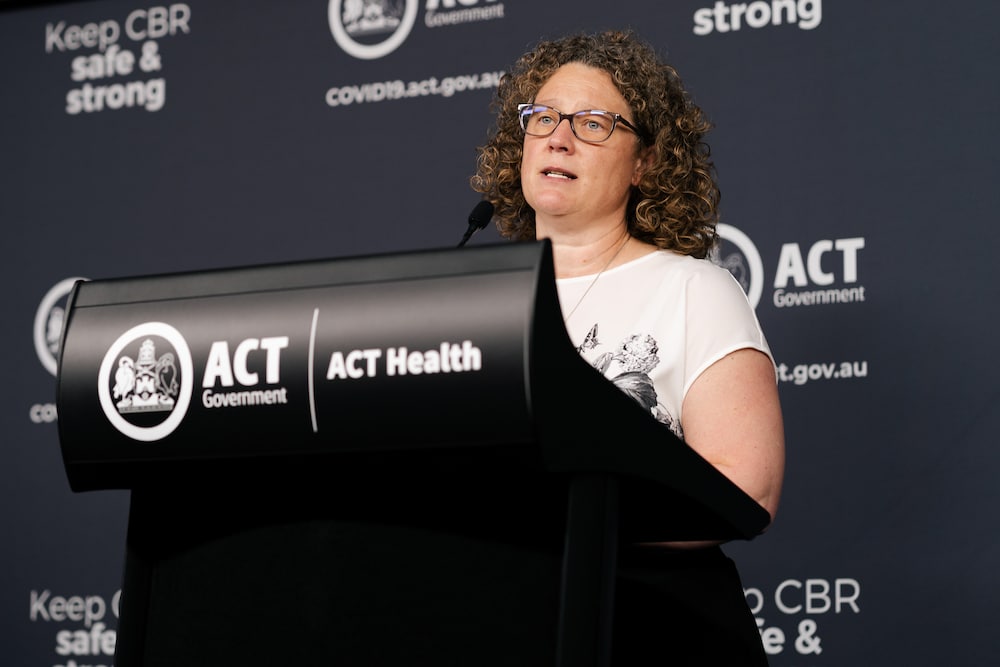If you’ve been caught up at an exposure site, or have viewed the lengthy, fluctuating list of exposure sites, you may be curious to know how they are designated, and what makes someone a close, casual or secondary contact.
There are a number of factors considered when determining what type of contact an individual is, as each situation is unique.
Factors include whether the exposure was indoors or outdoors, the amount of ventilation at the exposure location, if there’s crowding or not.
There are also activities that increase the risk of transmission too, including singing or shouting, or heavy breathing during exercise.
Close contacts

Being identified as a close contact first and foremost means you have been to a site identified by ACT Health a carrying a “high” risk of infection.
For example, if transmission has already been recorded at the location, it is already then designated as a “high-risk” site, making you a close contact.
If you have been to any of the close contact exposure locations at the dates and times listed, you are a close contact.
Close contacts are required to undergo a full 14-day quarantine and take three tests over the that time: on entry, day 5-7, and exit on day 12-13.
Quarantine lasts until 11:59pm on day 14. Your quarantine period can end only if you:
- receive a negative test result from day 12-13 that you are able to provide to ACT Health; and
- also receive confirmation from ACT Health that you are able to leave quarantine.
If you haven’t heard from ACT Health after you expect your quarantine to finish and you have already received confirmation of your negative test result, call the COVID-19 Response Team on (02) 5124 6500 and select option 5 in the menu.
From here you can request a call-back from ACT Health.
Casual contacts
If you’ve been caught up at a casual exposure site, you are a deemed a casual contact and therefore at a “lower” risk of exposure.
Examples of locations that might be deemed casual include an outdoor site, or you may have spent a short amount of time in a large, well ventilated indoor venue at the same time as a confirmed case.
Casual contacts are required to get tested for COVID-19 and will be required to quarantine for a period of time.
You will not need to stay in quarantine for 14 days as your risk of exposure is lower than a close contact.
The length of time that you are required to stay in quarantine depends on the timing and results of your COVID-19 test(s).
The number of tests you’re required to take depends on how many days ago you were at the exposure location.
If you were at the casual contact exposure location less than 4 days ago, you will need two tests:
- You need to get a test as soon as you find out you are a casual contact.
- You will need to get another test on day 5 after you were at the casual contact exposure location.
- You need to remain in quarantine until you receive a negative test result from the second COVID-19 test.
If you were at the casual contact location 4 or more days ago, you only need to get one test:
- You should get tested as soon as possible.
- You will need to remain in quarantine until you receive a negative test result.
There is a difference in the testing times for casual contacts. This is because you may return a negative test result in the first few days after exposure, even if you have COVID-19.
The last day of potential exposure to COVID-19 counts as day zero.
After you leave quarantine, you must remain vigilant for symptoms for 14 days following your last exposure.
If you have symptoms, you must remain in isolation until your symptoms resolve and you return a negative COVID-19 test result.
Secondary contacts

Being designated as a secondary contact means you’ve been in proximity to a close contact since they were exposed to a confirmed case of COVID-19.
This is most commonly household members and can also include workers who remain onsite.
“To get ahead of the virus spread, we need to put their secondary contacts in isolation as well because otherwise we might risk not getting them into quarantine in time,” Dr Kerryn Coleman said.
Secondary contacts who are household members of a close contact are required to quarantine until your household’s close contact is released from quarantine by ACT Health.
You should maintain separation from the close contact during the quarantine period. This includes:
- Always remaining completely separated from them.
- Staying and sleeping in a different room from them.
- Using a separate bathroom – if that’s not possible then disinfect each touched surface after use.
- Not share household items including dishes, cups, towels, bedding, or other items. After using these items, they should be washed thoroughly.
- Avoid shared/common areas. If it is unavoidable, ensure that masks that cover the nose and mouth are worn whenever in common areas.
For secondary contacts who do not live with the close contact in question, you must quarantine until the close contact has a COVID-19 test and receives confirmation of a negative result.
As long as you have had no contact with the close contact since their test, you can then leave quarantine.
In that case, secondary contacts are asked to separate from other members of their household by following the same guidelines above.
Get all the latest Canberra news, sport, entertainment, lifestyle, competitions and more delivered straight to your inbox with the Canberra Daily Daily Newsletter. Sign up here.
For more COVID-19 news:


